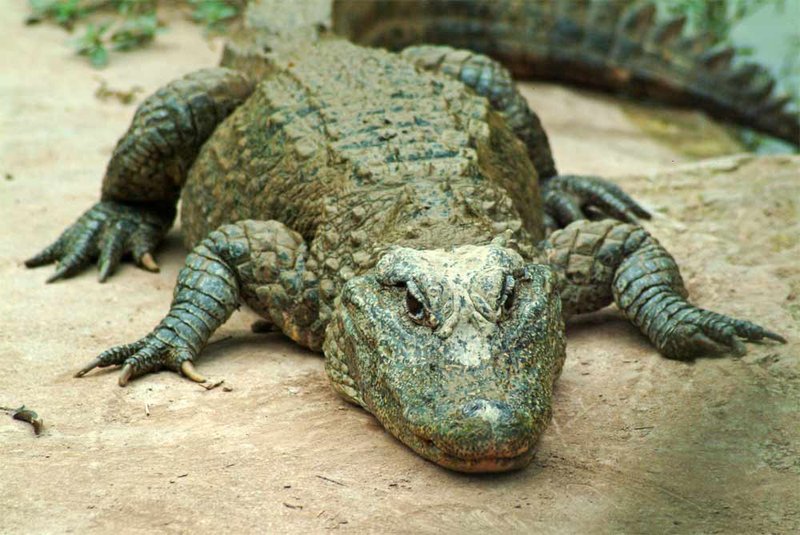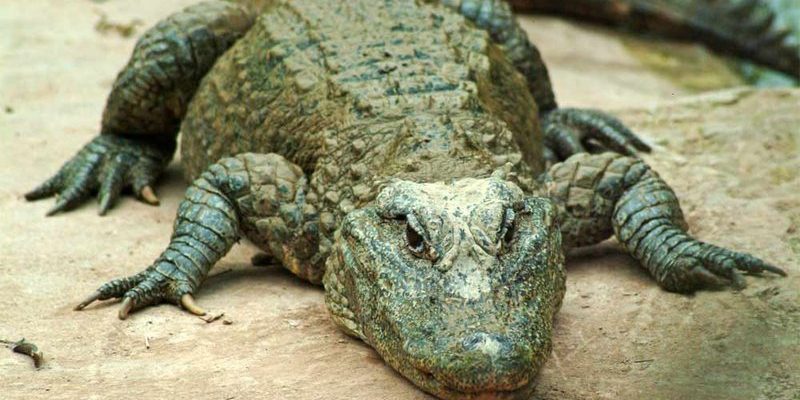
The Chinese alligator is often surrounded by myths and misconceptions. Some people think they’re just miniature versions of American alligators, while others believe they can’t live in cold weather. Here’s the thing: separating fact from fiction can be tricky. So let’s dive into some common myths about the Chinese alligator, untangle the truths, and get a clearer picture of this remarkable reptile. Ready? Let’s get started!
Myth 1: Chinese Alligators Are Just Smaller Alligators
Many folks might assume that Chinese alligators are just smaller versions of their American relatives. While it’s true that they are smaller, with adults typically reaching about 5 to 7 feet, calling them “miniature” overlooks their unique characteristics.
For instance, Chinese alligators tend to have broader snouts compared to American alligators. Their skin is also covered with a different pattern of bony plates known as osteoderms. These adaptations help them thrive in their specific environment, which includes freshwater marshes and rivers.
It’s fascinating to think about how a species can evolve differently based on its habitat. So yes, while they might look similar at first glance, the Chinese alligator has its own identity and traits that make it special.
Myth 2: Chinese Alligators Cannot Tolerate Cold Weather
Another popular belief is that Chinese alligators can’t handle cold temperatures. However, that’s not entirely accurate. While these alligators do prefer warmer climates, they have adapted to their environment over thousands of years. They can tolerate cooler temperatures, especially in their native habitat of eastern China.
Let’s go back to their home waters. During colder months, the temperatures in the Yangtze River basin can fall significantly. To cope, Chinese alligators have developed a behavior called “brumation,” similar to hibernation in mammals. They slow down their metabolism and remain inactive, often hiding in mud or submerged in water to stay warm.
So, while they’re not fans of freezing temperatures, they can certainly manage a bit of a chill.
Myth 3: They Are All Aggressive and Dangerous
You might picture an alligator as an aggressive predator, ready to snap at anything that comes too close. While the Chinese alligator can be territorial, they are generally much more shy and reclusive than their American counterparts.
Unlike the more aggressive American alligator, the Chinese version is known for being less confrontational. They prefer to avoid humans whenever possible and often retreat into the water when disturbed. Interestingly, the small population left in the wild tends to be more vulnerable than aggressive.
So, while they do have sharp teeth and a powerful bite, their first instinct is to avoid conflict. This approach makes them a lot less dangerous to people than you might think.
Myth 4: Chinese Alligators Are Not Endangered
If you’re under the impression that the Chinese alligator is thriving, it’s time for a reality check. Sadly, this species is classified as “Critically Endangered” by the International Union for Conservation of Nature (IUCN).
Over the years, habitat destruction, poaching, and pollution have led to dramatic declines in their population. The Yangtze River basin, once bustling with these reptiles, has been drastically altered due to human activity. Roads, agriculture, and urban development have taken a toll on their natural habitat.
Conservation efforts are underway, but they need all the help they can get. It’s essential to spread awareness about their plight and support initiatives aimed at protecting this unique alligator.
Myth 5: They’re Strictly Freshwater Creatures
You’ve probably heard that alligators stick to freshwater habitats. While it’s true that Chinese alligators are primarily found in freshwater, they’re not exclusively limited to it. They can occasionally be spotted in brackish waters, which are a mix of freshwater and saltwater.
This adaptability helps them survive in various conditions. They often hunt for food in shallow marshes, but their ability to tolerate a range of water types gives them more opportunities for finding food. This flexibility is a testament to their resilience as a species.
Understanding this can change how we think about their role in their ecosystems. They’re not just restricted to one type of environment; they can make the most out of what’s available to them.
Myth 6: Chinese Alligators Are All Alone in the Animal Kingdom
It might come as a surprise that the Chinese alligator is not an isolated species. In fact, they are part of a larger group of reptiles known as crocodilians, which includes crocodiles and caimans. They share a common ancestor with these relatives and exhibit some similar features.
However, the critical thing to note is their unique evolution. The Chinese alligator has adapted to a particular niche within the crocodilian family. For one, they have developed specific hunting strategies that suit their environment, focusing primarily on small fish, crabs, and other aquatic creatures.
So, while they might seem like an exception to the crocodilian rule, they’re actually part of a rich tapestry of related species that have adapted uniquely to their surroundings.
Myth 7: You Can Find Chinese Alligators Everywhere in China
If you think that Chinese alligators are roaming freely across China, you’ve got another myth to toss out. In reality, these alligators are limited to specific regions, primarily in the Yangtze River basin and a few surrounding areas.
As mentioned before, their habitat has shrunk significantly over time. Many areas that were once home to large populations of Chinese alligators have been transformed by agriculture and urbanization. Nowadays, wild populations are severely fragmented, making it more difficult for them to thrive.
Efforts to protect these habitats are critical because they not only help the alligators but also ensure the overall health of the ecosystems they inhabit.
Final Thoughts on the Chinese Alligator
The Chinese alligator is a remarkable creature full of surprises. It’s easy to get lost in the myths and misconceptions surrounding it, but understanding the facts allows us to appreciate its uniqueness.
From their adaptations to cope with colder climates to their shy nature and critically endangered status, there’s so much to learn about these fascinating reptiles. As we continue to explore and protect their natural habitats, we must also work to dispel these myths so that future generations can understand and appreciate the value of the Chinese alligator. Let’s keep the conversation going and do our best to advocate for these stunning creatures.

